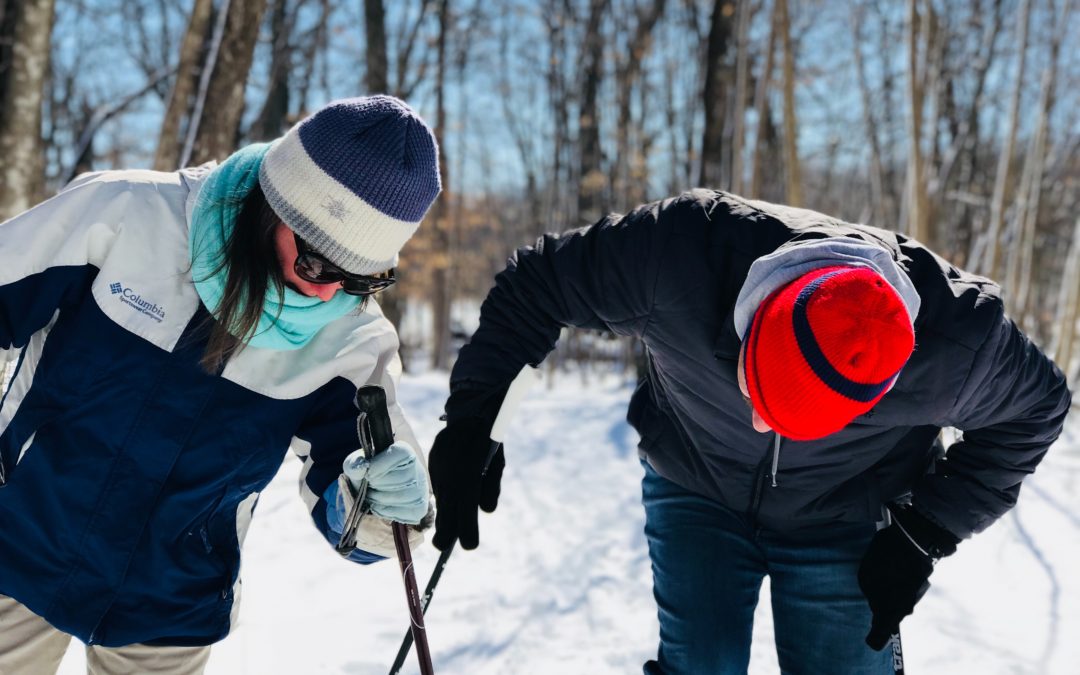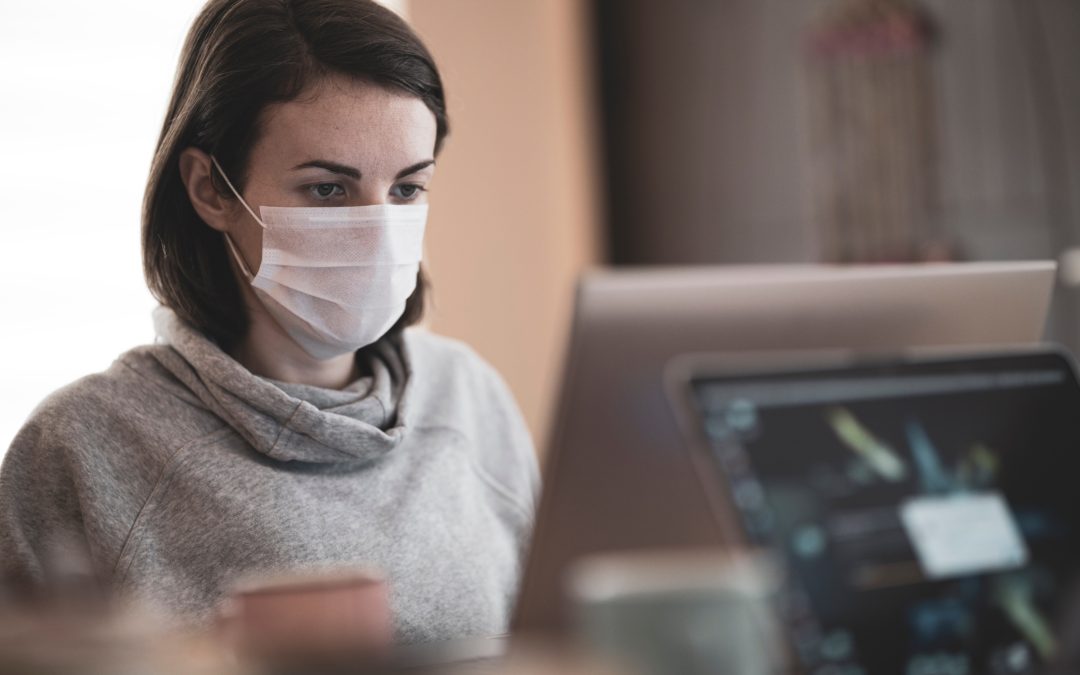
Apr 29, 2021
Guide to Handling Bleaches and Other Chemicals during the Pandemic
Bleaches and other types of chemical-based disinfectants are in demand during the pandemic. Even until now, as the new normal ingrained the habit of frequent cleaning in us. Many of us may have been vaccinated already, but we can’t risk another outbreak to happen. As such, strong disinfectants became a new essential in every home and business establishment.
If you want to profit off this trend, don’t start until you actually know what you’re venturing into. Manufacturing bleaches and other chemicals puts your health at risk. The material is also susceptible to leaking and spilling, creating safety hazards all over your workplace.
It will be costly to deal with health problems and injuries in your workers. They won’t be minor cases, after all. Constant unprotected chemical exposure warrants a serious respiratory infection, while slips and falls can result in long-term disability.
So here are your crucial pointers for handling bleaches and other chemicals for viruses:
Refer to EPA-approved Products
If you’re creating a new brand, check out the U.S. Environmental Protection Agency’s list of approved disinfectant products. That will give you an idea of the chemical ingredients to use. Check out the popular brands in the market as well to get a glimpse of your potential competitors.
Disinfectants aren’t supposed to be useful against the COVID-19 virus only. It should also killcold, flu, and other disease-causing viruses,including canine parvovirus, which is notorious for killing puppies. If you’d market to people with pets, they’d definitely need a disinfectant potent enough to kill that menace.
Note that disinfectants are distinct from other cleaning products. Disinfectants kill germs, while ordinary household cleaning products only remove them. Hence, avoid claiming that your disinfectant brand works as a cleaner, too. In fact, according to the Centers for Disease Control and Prevention (CDC), disinfectants should only be used on surfaces that have already been cleaned.
Personal Protective Equipment (PPE) is Mandatory in Your Workplace
During the pandemic, PPE has been mainly associated with healthcare facilities. But PPE is also essential in other industries, including production and manufacturing.
But the PPE you need in your workplace isn’t the same as those worn by healthcare workers. Your PPE should meet industry standards, or you could be fined. For the handling of chemicals, your workers may need one of the four types of PPE:
- Level D Protection: Level D PPE are the most basic work uniform for chemical handlers. It’s composed of coveralls, safety footwear, gloves, and disposable protection suits. However, they can’t be worn if there are skin and respiratory hazards in your workplace.
- Level C Protection: This type of PPE is for facilities with airborne chemicals and substances. It includes the garments in Level D PPE, plus an air-purifying respirator. But skin and eye protection aren’t necessary for routine use.
- Level B Protection: You can settle for Level B Protection if your workplace isn’t threatened by skin and eye irritants. But your workers still need full-body protection, particularly chemical-resistant types.
- Level A Protection: This is the PPE type that offers the highest level of protection. Its ensemble of clothing includes an air respirator or a self-contained breathing apparatus, protective suit with full encapsulation, inner and outer safety gloves, and steel toe footwear (can be worn over or under suit boots).
Perform a complete hazard assessment of your workplace before deciding on a type of PPE to require. Train your workers on the proper usage of PPE as well; they’ll only receive its full protection when they wear it correctly.
Leaks and Spills May Result in Serious Health Issues
Since you’ll be handling liquid chemicals, you need storage equipment that prevent leaks and spills. They will protect your workers from dangerous exposure to chlorine gas, a chemical found in cleaning materials such as chlorine bleach.
Your chemicals should be secured in drum containers, and held atop high-grade chemical containment palletsfrom a reliable supplier such as TRADE ENVIRONMENTAL PTY LTD. The pallets protect the drums from slipping, so that the hazardous chemical inside them won’t cause safety and health risks.
Chemical handling is extremely serious in the production industry. Even low levels of exposure to them can cause respiratory diseases, especially if it’s often experienced. When workers suddenly breathe in airborne substances, they can develop acute pneumonitis. In time, if they continue ingesting chemicals, their acute pneumonitis can progress into long-term chronic pneumonitis, which may cause respiratory failure and death.
Health and safety are two of the most sensitive matters you’ll deal with in making disinfectant products. Develop an excellent plan for those factors first, ensuring that you’ve considered every single aspect in your business that affect health and safety. After that, then you may start your creating your marketing plan and commencing your operations.

Mar 31, 2021
Productive Things to Do While in Quarantine
The world is currently dealing with a global pandemic, and many of us are forced to stay at home to prevent the spread of disease. Companies have resorted to a work from home format to facilitate the continuation of jobs, ensuring that business operations can proceed like usual.
But with commuting and preparation out of the daily equation, we’re left with the time that we never had before. What’s the best way to make use of that? Here are a few ideas.
Get Into Fitness
Since we’re all stuck at home with more time in our hands, it’s finally the opportunity to shed the weight we’ve accumulated over the years. If you’re worried about going to the gym, then fret not. There are many ways to get fit even at home. For starters, you can try easy calisthenic or bodyweight exercises like push-ups and squats. Being that these exercises require very little equipment and utilize your own body weight, it makes a great start for fitness.
Alternatively, personal equipment for your own makeshift home gym is affordable and accessible. You can start with resistance bands as they can emulate how barbells and dumbbells work. For the best effect, go for a combination of resistance training and calisthenic exercises.
Learn How to Cook
The best way we can make use of the time we have at home is to develop life-skills. And among the most important life skills is, of course, cooking. Everyone likes to eat, but not everyone knows how to cook. If your cooking skills don’t go beyond frying hot-dogs or eggs, then take the time to learn an easy fish escabeche recipe! Or go for something grander, like carbonara or even a home-style pizza.
Even if you already know how to cook, this is the best chance to hone your other cooking-related skills chopping or learn something more advanced like gutting a fish. Learning how to cook (and how to cook well) is one of the best life skills you can develop.
Study Personal Finance
If there’s one thing that we all felt through the quarantine, is that our money will run out if we don’t treat it wisely. With companies suddenly downsizing because of an economic downturn and finding a new job being more difficult, learning more about personal finance and how to better handle your money is crucial in surviving in the long run. Personal finance is an umbrella term that covers handling your money, budgeting, expenses, savings, insurance, even investing. With how volatile the economy is today, learning more about managing your own finances will definitely go a long way.
Grow a Garden
One thing we can’t do nowadays is to go outside and enjoy nature. But that doesn’t mean we can’t bring nature to us. Yes, we’re talking about having your piece of nature at home. If you have a yard, or extra space at home, one way you can utilize it is by starting your own garden. You can go for either decorative plants or fruit-bearing plants. Both have their own advantages, but can help you make in not just keeping your sanity, but keeping the air fresh. For fruit-bearing plants, you can go for common but useful ones like chili pepper, tomato, onions, or calamansi.
Learn a New Skill
We live in an age where technology gives us access to a whole host of resources- for free. Using the Internet, we can dive into topics as deep as we can, as the expanses of learning materials available are far and wide. Why not use what time you have now to arm yourself with a new skill? Take, for example, programming. With how reliant the world is on technology, learning programming and coding will definitely be a useful skill to have.
There are millions of free resources available on that topic as well. Or you can learn more about sewing or crocheting. While you need the materials to do them, the learning materials are free, and if you have thread and needle lying around you can start immediately (Who doesn’t, right?). Learning a new skill might just provide you with more opportunities in the future.
Get an Online Certification
As mentioned in the last point, learning a new skill is one thing you should definitely do during this time. Another idea that can make learning a new skill even more worth it is getting an online certification for it. While you may have to pay for the course, being certified for a skill can bolster your resume and open you to more career options. Especially during times of job instability, having a certification can help you secure jobs as it’s a guarantee of skill. Fortunately, there are many affordable online courses available, and some are even free.

Mar 5, 2021
5 Essential Items When Playing Winter Weather Sports
Spring is just around the corner, but the persistent cold has given people a few extra weeks for indulging in their favorite winter sport. Some people may prefer to stay indoors and watch a “Friends” Christmas episode. But more adventurous souls are using the chill of the polar vortex to bust out their skis and skates and shred some snow.
As fun as spending hours and hours on end on the snow or on ice can be, you have to be aware of the common injuries enthusiasts of cold weather sports routinely encounter. You should also know what gear you must always carry with you when you play winter sports.
Common Injuries in Cold Weather Sports
Snow and ice are two very treacherous aspects of nature. They limit visibility, restrict movement and impose deadly conditions on the human body, especially after prolonged periods. It’s no wonder they cause a lot of injuries. People routinely slip, fall and hurt themselves when doing normal things in winter weather, and the risks increase greatly when you’re playing a sport. Here are some of the more common injuries winter sports enthusiasts are likely to encounter.
- This condition is caused by the freezing of blood vessels in the extremities, such as fingers, toes, ears and lips. The frozen blood vessels prevent circulation to these areas, causing cellular death. The danger of frostbite is how it can sneak up on people due to the loss of sensation. If discovered too late, it can lead to amputation or disfigurement.
- Ice and snow decrease surface traction, meaning its incredible easy for someone to slip and strike their head on icy surfaces. This can lead to a concussion, which is when the brain impacts the skull due to blunt force. Mild concussion can lead to confusion and loss of coordination while serious concussions can lead to memory loss and even death.
- The slippery surfaces caused by snow and ice are also responsible for injuries to the limbs. If you slip and don’t hit your head, you’re most likely to catch the fall with your shoulder or fall badly on your feet. This can pop the joint in question out of their socket, dislocating it quite painfully.
- Sprains and Fractures. Worse, a bad fall due to a skiing mishap or a skating accident can break the bone or tear your ligaments. These are known as sprains and fractures. They can take weeks, if not months, to heal and seriously impede your mobility.
Essential Winter Sports Gear
The injuries listed above can be prevented and their damaged reduced with the appropriate gear. Cold weather sports are especially notorious for their tricky surfaces and you should never venture out in the winter without the right equipment.
The combination of adverse conditions, freezing temperatures and slippery surfaces make it essential that you carry most of the items in the list below.
The Right Clothes
Winter clothes aren’t just for decoration or fashion. They’re essential in preventing your core temperature form plummeting and stopping your extremities from suffering from frostbite. A kid’s ski jacket by Spyder will help a child stay warm and stave off the expects of hypothermia while playing outside on the snow. Beanies, sweaters and scarves all play the important role of keeping you warm while out in the winter.
Helmets
Concussions can be very nasty injuries and the only way you can prevent them is by not falling over. Failing that, you should mitigate the impact of such a fall with an appropriately shock-proof helmet. If you’re using an older helmet, check them for any chipping or cracks before using as this type of damage will reduce its protective capability.
Kneepads
Ice is slippery and a bad fall can pop your knee right out of its socket or cause abrasions on your legs. This injury can be prevented if your wear kneepads. This gear is more commonly used when skating or playing hockey, as the icy surfaces make for increased slipperiness and a painful place to impact.
Socks
Never underestimate the importance of good thermal socks. Just like how your scarves and hats stop your ears and face from freezing in the cold weather, great socks are essential in making sure your toes don’t succumb to frostbite. Unlike your fingers and face, you’re not going to directly observe your toes, meaning you may not know that they’re turning blue already. This makes great socks an investment that could just save your toes.
Goggles
Goggles in winter sports do more than just protect your eye from potential irritants like grit or pine needles. They can prevent you from going blind entirely. Snow is ferociously white, and this reflective surface makes it ideal for creating blinding sun glares. Prolonged exposure to these intense ultraviolet lights can permanently damage your retinas. Goggles with tint are there for essential when spending hours outdoors in the snow and ice.
Winter weather sports are fun and increase your physical fitness. But without proper protection and gear, they’re more liable to cause you serious bodily harm. Equip yourself with the best protective clothing possible to ensure you don’t hurt yourself while shredding the snow and marking the ice.

Feb 19, 2021
Should You Borrow Money to Travel?
Frequent travelers usually save up or use their credit cards to finance their trips. Some also take out a loan, specifically a travel loan, a.k.a. tourist loan. Borrowing money for a trip may not sound the most sensible, but if you use your credit card to book flights and shop abroad, aren’t you technically doing the same?
People who are highly deliberate with their finances may disapprove of going into debt in order to travel. However, there could be some perks to getting a travel loan. If you found a good lender, you can negotiate your terms so that you can still stick to your monthly budget while making your repayments. Plus, travel loans aren’t as big as home loans or car loans. You won’t be borrowing hundreds of thousands, so it’s easy to repay over a short period.
Potential Challenges to Borrowing Money for Travel
Travel is neither a tangible nor an appreciating asset. It is a luxury that loses value upon consumption. As such, it’s worthless to anyone but you.
Ask yourself what the trip means to you before borrowing money. Determine if the memories you’ll make will last a lifetime. If you’ll be sacrificing a part of your monthly income for repaying the loan, then your travel should be worth it. Depending on how much you borrow, you could be repaying the loan for years.
For example, if you borrow $10,000 for a month-long trip all over Asia, and the loan’s interest is at 15%, your monthly payment for 5 years will be $237.90. Your interest payments would add up to $4,273.96, making your total repayment $14,273.96. That’s a hefty amount of money for a depreciating asset. But if the travel’s value if beyond monetary for you, then paying over $200 every month for 5 years shouldn’t be an issue. You can negotiate for a more flexible term anyway, such as 10 years. But your interest payments will blow up more over that period.
The Good Side of Borrowing Money for Travel
Debts have such a bad reputation when it is used for anything other than homes, businesses, or cars. Some people even disdain travelers who use borrowed money for their trips. But a travel loan has more positive qualities than one realizes.
Travel loans allow for more financial flexibility. You can borrow more than what you need so that you’ll have room to enjoy your travel more. Say, your California itinerary didn’t include a tour to the Disneyland Resort initially, but upon setting foot in the state, you realized that it would be a bummer to miss it. But because you borrowed more than what you need, you can still buy tickets to the Disneyland Resort and enjoy a guiltless, spontaneous activity.
In addition, having extra money is useful in case of emergencies. Some trips result in unexpected food poisoning or injuries. Though an ER visit is the last thing in your mind while planning a trip, it’s better to be prepared for it than experience it empty-handed. If not a medical-related incident, emergencies can be extra baggage fees, hotel services, or unplanned activities.
Furthermore, travel loans give you more financial advantage than credit cards. Using a credit card tempts you to spend more because you’re not seeing your money get wiped out. Paying with cash, on the contrary, encourages you to stick to your budget. A travel loan’s fixed interest rate is lower than a credit card’s, too.
How to Qualify for a Travel Loan
There are many lenders offering travel loans. Each lender and loan offer different perks. But the qualifications are more or less the same for everyone. The terms, however, may differ depending on the location. In the Philippines, for example, a standard travel loan program has a term of 1 day up to 365 days, a principal amount of Php 1,000 to Php 35,000, and a fixed interest rate, calculated after application.
But as with any loan, you need a good credit score to be approved. A major credit scoring company will assess your financial records to see if you fit the risk profile. If you have no other debts, your chances of getting approved increases.
Here are the requirements for applying, assuming that you’re borrowing in the Philippines:
- Must be at least 18 years old at the time of application formalization
- A Philippine or U.S. citizen
- A permanent source of income
Having no credit score or history won’t automatically result in a denial. But for lenders to ensure that you’ll repay, they may ask for collateral, such as your car or another one of your properties.
Considering the amazing perks of a travel loan, being short on cash is no longer a hindrance to exploring the world. As long as you are a responsible spender, then borrowing money for travel won’t jeopardize your financial stability.

Feb 18, 2021
How to Prepare Your Affairs In Case the Worst Happens
The coronavirus pandemic has brought a death toll in the millions from all around the world. The best way to protect people from contracting the illness remains distancing yourself from other people and staying indoors as much as possible. But people still need to go to work, especially if they’re frontline workers.
However, although the definition of frontline workers needs to be agreed upon by authorities, you may already be returning to your regular workplace. This is particularly hazardous. For example, even if your wellness resort adjusts to the pandemic, you still face an increased risk of contracting the illness and getting hospitalized.
Worse, you may have a preexisting condition and fall mortally ill. The mortality risk of the illness depends on largely on your age, but you never know how it can affect you and your capacity to earn. Although it is a very sensitive and grim topic, you need to learn how to set your affairs in order in case you are hospitalized for a prolonged time or in case the worst happens.
Here are five steps you can take to ensure your affairs won’t be a mess if you fall ill and that your loved ones are take care of.
- Locate all Personal Records
You need to set your affairs in order long before you put yourself at risk. Locate and collate all important personal records your family or loved ones may need to check you into a hospital or to access your finances. These will generally fall into three categories: personal information, financial data and medical information
Medical information includes your insurance policy and documents on the coverage of your health insurance. Your previous medical history will also be necessary to guide doctor’s treatments.
Your personal information includes all documents that will help your loved prove that you are who you say you are. Birth certificates, certificates of employment and marriage licenses belong in this category.
Finally, you must collate your financial records. The passwords to your bank accounts, lists of assets like real estate property and investments should all be easily accessible by your family in case the worst happens.
- Create a Reference for Important Documents
Naturally, all your documents will be incredibly difficult to parse. This is why you need to make it easier for your loved ones to reference and find them. For example, you can sort out all your files into different clearly marked folders with tabs indicating the contents. You can print out a page identifying which document is which and where they can be found. This will make the process significantly easier if you do succumb to an illness.
- Prepare Advanced Directives
If you do catch the virus, you’re more likely to be incapacitated for a long period or even rendered uncommunicative. You may be too delirious to manage your healthcare and finances or unable to speak due to medical devices. This makes arranging advanced directives essential prior to the events. Advanced directives generally fall into two types. A living will instructs people on how you want to be cared or in your illness. The other type is assigning someone who will have durable power of attorney for health care. This designated person will be in charge of making medical decisions for you.
If you own a business or have a lot of enterprises, you may also want to assign someone with durable power of attorney, which will empower them to make decisions for you in any legal task should you be unable to make them on your own.
- Come Up with Financial Strategies
Whether you’re running your own business or simply working on the front lines, you and the important people in your life need to come up with financial strategies should you fall ill. This can include where you’re going to get the money to pay for your health care. Which assets are you all willing to part with to fund prolonged hospitalization? Should you sell the car first or take out a second mortgage on your house? Setting these protocols up long before they become necessary makes it less hard for your loved ones and reduces the stress from an already stressful situation.
- Contact a Legal Professional
Finally, it wouldn’t hurt to get the advice of a legal professional. Have a lawyer go over your affairs such as your will and check if everything is in order. This can help you spot any issue that could reduce legal entanglements if you’re unresponsive or worse in a hospital. Their help will also be necessary if you plan on changing your will.
Yes, it’s not pleasant to discuss what could happen when the worst happens. But bad things, like serious illness, can and regularly do happen, especially in these uncertain times. Not discussing the probability and how to handle such events helps no one. Learning how to set your affairs in order will give you and your loved ones some peace of mind in these troubled times.

Feb 11, 2021
How to Stay Optimistic When Buying a Home
Purchasing a house can be a long and arduous task, especially for first-time homebuyers. Unless you have help from wealthy parents or are making big bucks yourself, chances are that the process won’t be as smooth sailing as you’d like it to be.
Home sellers, for instance, may say no to your offer or give you an unfair deal. Another scenario is a mortgage loan provider not giving you the interest rate you need.
When the home buying process gets tough, how do tough homebuyers keep going? Here are a few tips you can follow to stay motivated, disciplined and focused during the entire home purchasing journey:
If your friends or family members aren’t supportive of your decision to purchase a home in the current market, hear their reasons and arguments. Then, check if the facts they’re providing are true.
Also, don’t get discouraged when people warn you with home buying horror stories. If you find out some buyers delaying or changing their home buying timeline because of a specific problem, this doesn’t mean that their situation will automatically apply to you. Every home purchase is different, so don’t assume that things will end up badly when you see one or two aspiring buyers not doing well on their journey.
Although you need to be realistic with the house you can afford to buy, this doesn’t mean that you should settle for the next cheap house you see on the market. When people become exhausted or frustrated from their house-hunting efforts, they often begin to lower their standards. This way, they don’t have to experience the hassle of searching anymore.
If you’re getting annoyed about not finding the home you want, never settle for less. Take your time and be patient.
House hunting in a demanding real estate market can be a challenge for a lot of homebuyers. Once you’ve found an ideal property, chances are that someone else thinks that it’s ideal, too. This results in bidding wars, increased prices and raised stress due to competition.
Instead of getting annoyed at other homebuyers for wanting the same house, take steps to stand out from the crowd. Make offers that property sellers can’t refuse. Also, see if you could submit an offer that’s slightly above the listing price. This is helpful if you want to purchase a home that’s in demand.
The real estate market isn’t always constant or balanced. Sometimes, it favors sellers. Other times, the market favors buyers. Get familiar with how the housing market works in your area. This way, you’ll face fewer surprises and disappointments during the home purchasing process. What’s more, you’ll know the ideal time to proceed with your buying transactions.
Placing your best financial foot at the start of the home purchasing process is an effective way to infuse positive energy into the entire buying journey. Start by coming up with a realistic budget for a new home. Make sure that you take into account the following expenses:
Having a sound budget will give you a good grasp of the range of houses you should be viewing.
As you’re getting ready to buy, you’ll want to work on your financial health. A few measures you can do include:
Many dream of having a house of their own. Unfortunately, not everyone knows exactly what to look for in a house. When they can’t find what they want, they may likely settle for a residential property that isn’t ticking off all the boxes. Eventually, they’ll end up hating their new home before they even get to unpack.
So save yourself from frustration and disappointment by knowing exactly what you want in your dream home.
A good way to do this is to create a vision board. Start by pasting a picture of a dream home on the board.
Alternatively, you could put photos of the various parts of your dream house, such as the bathroom, bedroom and kitchen. Then, add specific details to these areas. You could, for instance, write down that you want a sofa, a coffee table and hardwood flooring in your ideal living room.
By creating a vision board and putting up pictures of your dream home, you’re training your mind to stay focused on what you want to achieve.
A positive mindset makes a lot of difference when finding and buying a great home. When you need further motivation, get someone to guide you through this life-changing journey.







Recent Comments